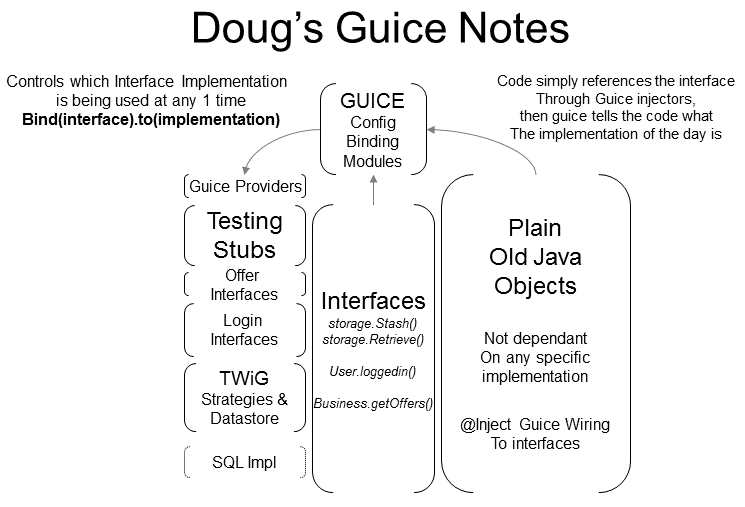All the "Guice Constructor Parameter" answers seem to be incomplete in some way.
Here is a complete solution, including usage and a visual:
![enter image description here]()
interface FooInterface {
String getFooName();
}
// Annotate the constructor and assisted parameters on the implementation class
class Foo implements FooInterface {
String bar;
@Inject
Foo(@Assisted String bar) {
this.bar = bar;
}
// return the final name
public String getFooName() {
return this.bar;
}
}
// Create a factory interface with a create() method that takes only the assisted parameters.
// FooFactory interface doesn't have an explicit implementation class (Guice Magic)
interface FooFactory {
Foo create(String bar);
}
// Bind that factory to a provider created by AssistedInject
class BinderModule implements Module {
public void configure(Binder binder) {
binder.install(new FactoryModuleBuilder()
.implement(FooInterface.class, Foo.class)
.build(FooFactory.class));
}
}
// Now use it:
class FooAction {
@Inject private FooFactory fooFactory;
public String doFoo() {
// Send bar details through the Factory, not the "injector"
Foo f = fooFactory.create("This foo is named bar. How lovely!");
return f.getFooName(); // "This foo is named bar. How lovely!"
}
}
Lots of helps here: https://google.github.io/guice/api-docs/latest/javadoc/index.html?com/google/inject/assistedinject/FactoryModuleBuilder.html

